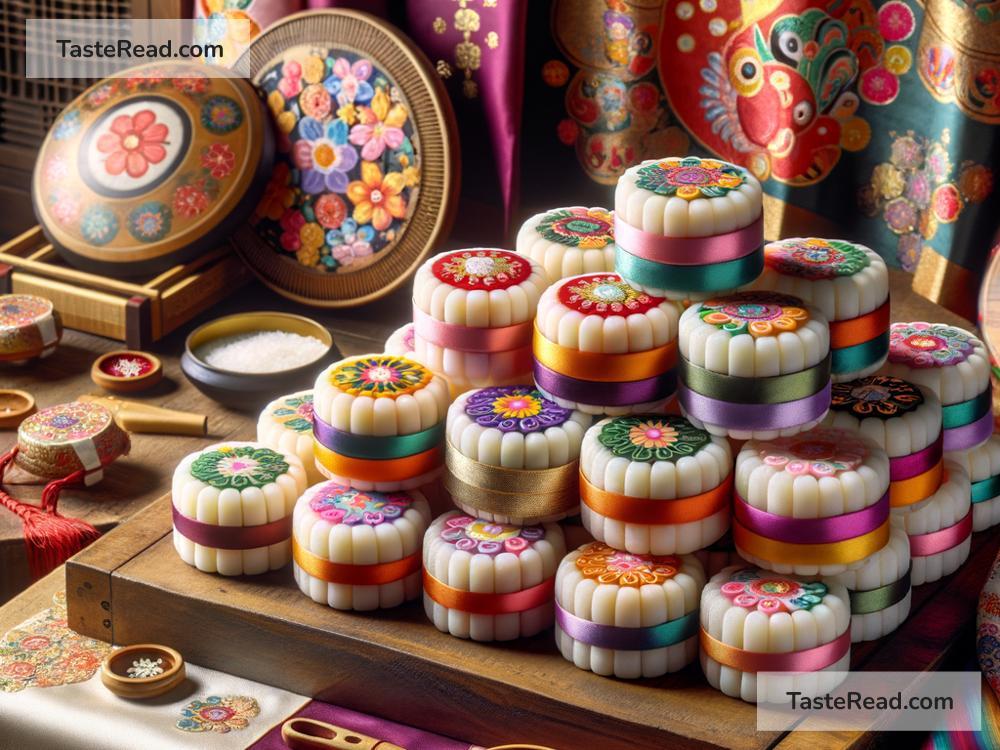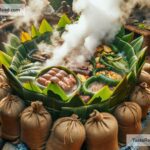Traditional Korean Rice Cakes During Seollal (Lunar New Year) Celebrations
Lunar New Year, or Seollal (설날), is one of the most important holidays in Korea. It usually falls around January or February, according to the lunar calendar. During this holiday, Korean families gather to celebrate, pay respects to their ancestors, and start the year with a fresh mindset. One essential part of Seollal is food, and among the traditional dishes served, rice cakes play a significant role in both the culture and the meal.
Rice cakes, known as “tteok” (떡) in Korean, are made from pounded glutinous rice. They come in many shapes, colors, and flavors and are enjoyed throughout the year, but they have a special place in Seollal celebrations. These rice cakes are not only delicious but also deeply symbolic. Let’s explore their importance, types, and how they’re enjoyed during the Lunar New Year.
The Significance of Rice Cakes During Seollal
Rice cakes have been a traditional staple in Korean culture for centuries. They symbolize prosperity, health, and unity. In the past, rice was considered precious, so rice cakes were often prepared for special occasions like weddings, birthdays, and holidays.
During Seollal, rice cakes are served to honor ancestors and bring good fortune for the year ahead. Families perform a ritual called “charye” (차례), where food offerings, including rice cakes, are placed on a ceremonial table as a way to pay respect to loved ones who have passed away. After the ritual, family members share the food together.
Rice cakes are also associated with longevity and resilience. Their chewy texture is thought to represent strength, while their simple taste reflects humility and harmony—important values in Korean culture.
Popular Types of Rice Cakes During Seollal
There are many varieties of tteok, but a few rice cakes are especially prominent during the Lunar New Year. Each type has its own unique flavor and meaning.
1. Tteokguk (떡국)
Tteokguk, or rice cake soup, is the star dish of Seollal. It is made by slicing thin pieces of white rice cake and cooking them in a savory beef or anchovy broth. The soup is often garnished with egg, seaweed, and green onions. Tteokguk is not just a delicious meal—it carries significant symbolism.
Eating tteokguk during Seollal represents turning one year older and welcoming a new beginning. Koreans traditionally joke that you can only say you’ve aged a year after finishing a bowl of this soup! Its white color symbolizes purity, while the round shape of the sliced rice cakes resembles coins, representing wealth and prosperity.
2. Jeolpyeon (절편)
Jeolpyeon are steamed rice cakes that are pressed into decorative patterns using a wooden mold. These rice cakes are soft, chewy, and often made in vibrant colors like green, pink, or yellow. They are usually flavored with beans, sesame seeds, or herbs like mugwort.
During Seollal, jeolpyeon is shared among family members to show appreciation and strengthen bonds. Its beautiful patterns make it a festive treat for this important holiday.
3. Injeolmi (인절미)
Injeolmi is a simple yet delicious rice cake coated with roasted soybean powder. This chewy treat has a nutty, slightly sweet flavor. It’s often served as a snack or dessert during Seollal and pairs wonderfully with warm tea.
Injeolmi is popular for its connection to friendship and unity. Sharing injeolmi with loved ones during the holiday reflects harmony and closeness.
4. Songpyeon (송편)
Although more closely associated with Chuseok (the Korean harvest festival), songpyeon can also be found on the Seollal table. These crescent-shaped rice cakes are filled with sweet ingredients like honey, sesame seeds, or chestnuts. They are steamed on top of pine needles, which give them a refreshing aroma.
Songpyeon is believed to bring good luck and is often made by the family as part of holiday traditions. Legend has it that if you make beautiful songpyeon, you will meet someone wonderful or have good fortune in the year ahead.
The Joy of Gathering and Sharing
Seollal is more than just a holiday—it’s a time for family, tradition, and love. Rice cakes are an essential part of the celebration, not only because they taste amazing but because they bring people together. Making and eating rice cakes is often a family activity, where generations of loved ones share stories and laughter while preparing the holiday feast.
These rice cakes also connect people to their ancestors and cultural roots. They honor the past and give hope for the future, carrying deep meanings that go beyond their simple appearance.
A Sweet Start to the New Year
During Seollal, traditional rice cakes fill Korean homes with warmth, flavor, and meaning. Whether it’s enjoying a comforting bowl of tteokguk or sharing the chewy goodness of injeolmi with loved ones, these desserts and dishes are more than food—they are a symbol of joy, togetherness, and new beginnings.
For anyone visiting Korea or celebrating Seollal abroad, trying these delicious rice cakes is a wonderful way to experience Korean culture. With their unique tastes and cultural significance, tteok is truly the heart of a memorable Seollal celebration.
Happy Lunar New Year! Or as Koreans say, “새해 복 많이 받으세요” (Sae-hae bok mani ba-deu-se-yo), which means “Have lots of luck in the new year!”


